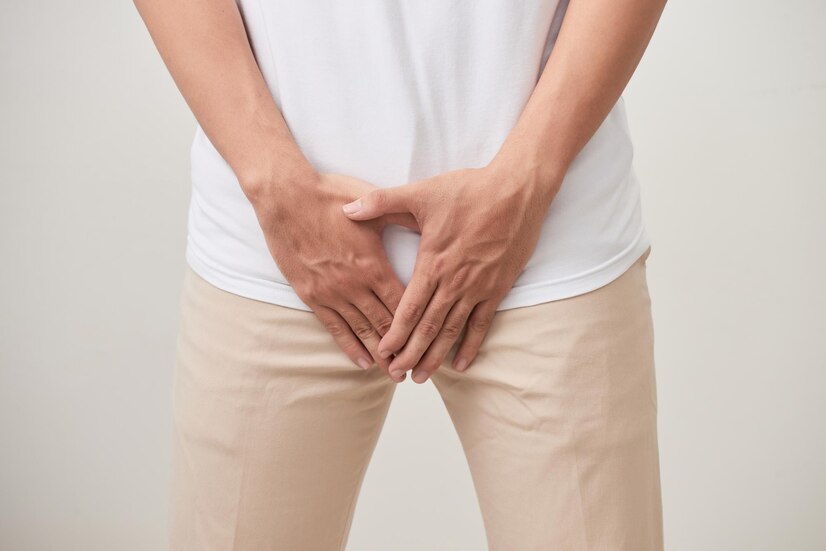7 Things You Should Know About Pearly Penile Papules (PPP)
Do you have little whitehead-like bumps around the head of your penis? If you do, should you be concerned about it? The answer depends on your current lifestyle. Every person wants to have a perfect sex life and to have the ideal sex life, a large penis is the first step.
For having a larger penis, Penis enlargement surgery is a good option. But along with the well-built sex organ, you must have perfect disease-free private parts. Let’s see how you can preserve the health of your private details
If you’ve had sex before, the bumps on your penis may be symptoms of sexually transmitted diseases or infections (STDs or STIs).
These could be:
- Genital Herpes: This is an STI caused by the herpes simplex virus (HSV) that can cause painful blisters and bumps on the penis. Genital herpes is incurable, but there are medications to manage and reduce the symptoms.
- Genital Warts: This is an STD caused by the human papillomavirus (HPV) that can cause bumps on the penis. However, they’re not as painful as genital herpes, can be difficult to notice, and often have irregular shapes.
- Syphilis: This is an STI that has no treatment and can cause serious health complications. Unlike genital warts and herpes, syphilis is caused by bacteria that can spread through sexual contact, leading to painless sores.
However, if you’ve never had sex, those whitehead-like bumps around your glans penis may be pearly penile papules (PPP). You may browse the internet for further education or continue reading this post to learn more.
Here are the things you should know about PPP:
Contents
1. What Is Pearly Penile Papules?
Pearly penile papules are pearl-like, dome-filled, rounded bumps that form rows around the corona of your glans penis. They may look like whitish, pinkish, or yellowish dots or pearls. As long as no other symptoms are involved, these small spots are considered normal and harmless.
Pearly penile papules are also neither malignant, pre-malignant, infectious, or contagious. They don’t spread through sexual contact or change in size and shape, unlike many STDs and STIs. Also, they’re neither painful nor itchy and may likely appear during the late stages of puberty.
Here are the characteristics of PPP to help you identify them:
- White, yellow, or pink bumps with a pearly appearance
- Round, dome-filled bumps above the skin
- One to four millimeters in diameter
- Appearing in a couple of rows encircling the shaft of the glans penis
Pearly penile papules are often mistaken as a symptom of STIs or STDs. But unlike these conditions, these harmless bumps on the head of your penis are smaller and don’t spread through other body parts such as the anus or the scrotum.
2. What Are The Symptoms Of PPP?
In most cases, PPPs don’t develop symptoms other than benign bumps. Once formed, they’ll remain throughout your lifetime. They may fade away as you age, but as mentioned earlier, they don’t change in color, shape, or size or spread through other body parts.
Since PPPs are similar to genital warts, you should seek medical attention as soon as you notice these spots on your penis. If you’ve never had sex before, the chances of these bumps being an STD are less likely.
Nevertheless, if any additional symptoms show up, make sure to visit your doctor for diagnosis and immediate medical treatment.
These might include the following:
- Bleeding
- Itchiness
- Pain during urination
- Skin discoloration
- Discharges
These additional symptoms might indicate underlying medical conditions that require immediate medical attention, so visit your doctor as soon as possible.
3. What Causes Pearly penile papules?
Healthcare professionals don’t have an exact answer as to why PPP develops in some men and not others. Many believe that PPP is one of the body’s vestigial organs—body parts that were once functional but aren’t anymore due to evolution.
Experts suggest that these bumps are leftovers from embryonic development. Although the exact cause is yet to be discovered, healthcare professionals agree that PPP is harmless and normal.
4. How Common Is PPP?
Estimates show that 14-48% of men worldwide may experience PPP throughout their lives. It’s more common in people who haven’t undergone circumcision yet and are in their early adolescence or late puberty stage. The good thing is that some papules tend to disappear over time.
5. How Can You Prevent PPP?
There’s no definitive way to prevent the formation of PPPs. As of this writing, experts have yet to determine the exact cause of PPP and why not all men experience it.
However, there are factors experts are looking into such as race, circumcision, and age. Black people are more likely to develop PPP than other races. Young men (age 10-25) have higher chances of developing PPP—the same goes for those who aren’t circumcised yet.
6. How Are PPP Diagnosed?
Your doctor can easily diagnose the bumps on your penis as PPP through visual observation. The observation may be confirmed by scanning the tissue using a handheld instrument known as the dermatoscope.
It’s a good idea to consult your doctor as soon as you notice any bumps or lumps on your private parts. With the right diagnosis, you and your sexual partner/s will have peace of mind about STIs or STDs.
The dermatoscope can determine if the bumps on your penis are PPPs or STDs such as genital herpes or molluscum contagiosum.
7. How Is PPP Treated?
Although PPP doesn’t require medical intervention, treatment options are available to remove them. These procedures can help enhance the appearance of your penis and boost your confidence.
- Cryosurgery: This procedure uses extremely low temperatures to freeze and disintegrate tissues such as PPPs and tumors, using a freezing agent (e.g., argon gas, nitrous oxide, or liquid nitrogen). However, there are risks to consider such as blistering, scarring, minor ulcers, and infection.
- Carbon Dioxide Laser Surgery: This treatment is an effective way to remove penile papules and other skin problems such as warts, birthmarks, scars, and wrinkles. It uses carbon dioxide laser beams to dissolve PPP without causing serious damage to surrounding body parts.
- Excisional Surgery: This is the traditional way of removing excess tissues and lumps above the skin like PPP. It uses surgical tools to remove bumps one at a time. Since this requires minimal incisions, more risks are involved such as scarring, bleeding, and infection.
- Radiosurgery: This procedure uses focused radiation beams (e.g., X-rays, gamma rays, or proton rays) to remove excess lumps and bumps on the skin without incisions. The beams create free radicals to destroy PPPs. However, this isn’t as effective as the other treatment options above.
Final Words
Pearly penile papules are harmless, non-contagious, and non-infectious bumps around the head of the penis. They don’t have an exact cause but are more common in uncircumcised men and those around 10-25 years old. If additional symptoms occur, consult a healthcare professional immediately for complete diagnosis and treatment.
Read Also:
- How Effective Are Tadalafil for ED Treatment
- What’s The Adult Circumcision Procedure Like?
- How to Treat a Yeast Infection in Adult Males



